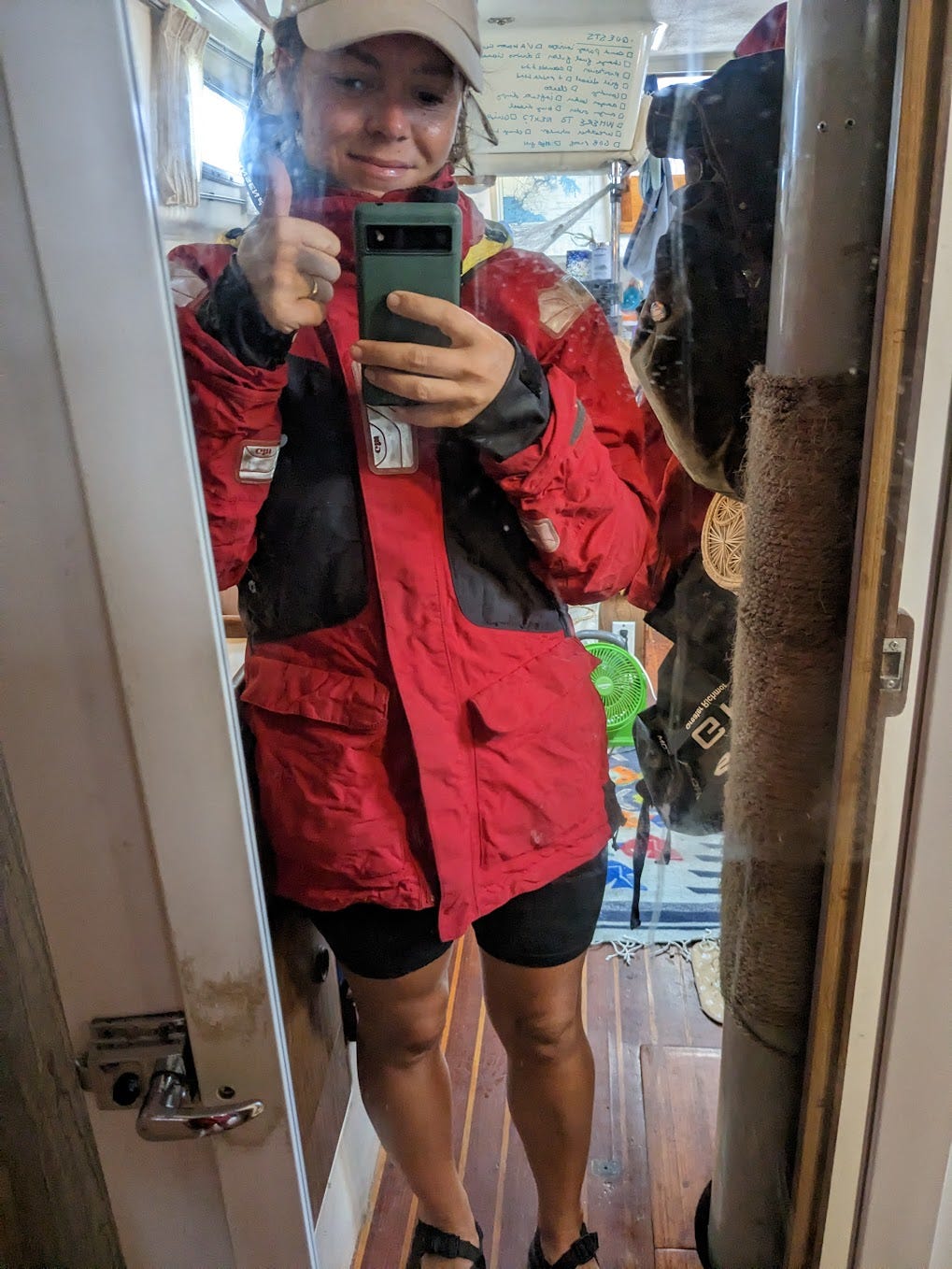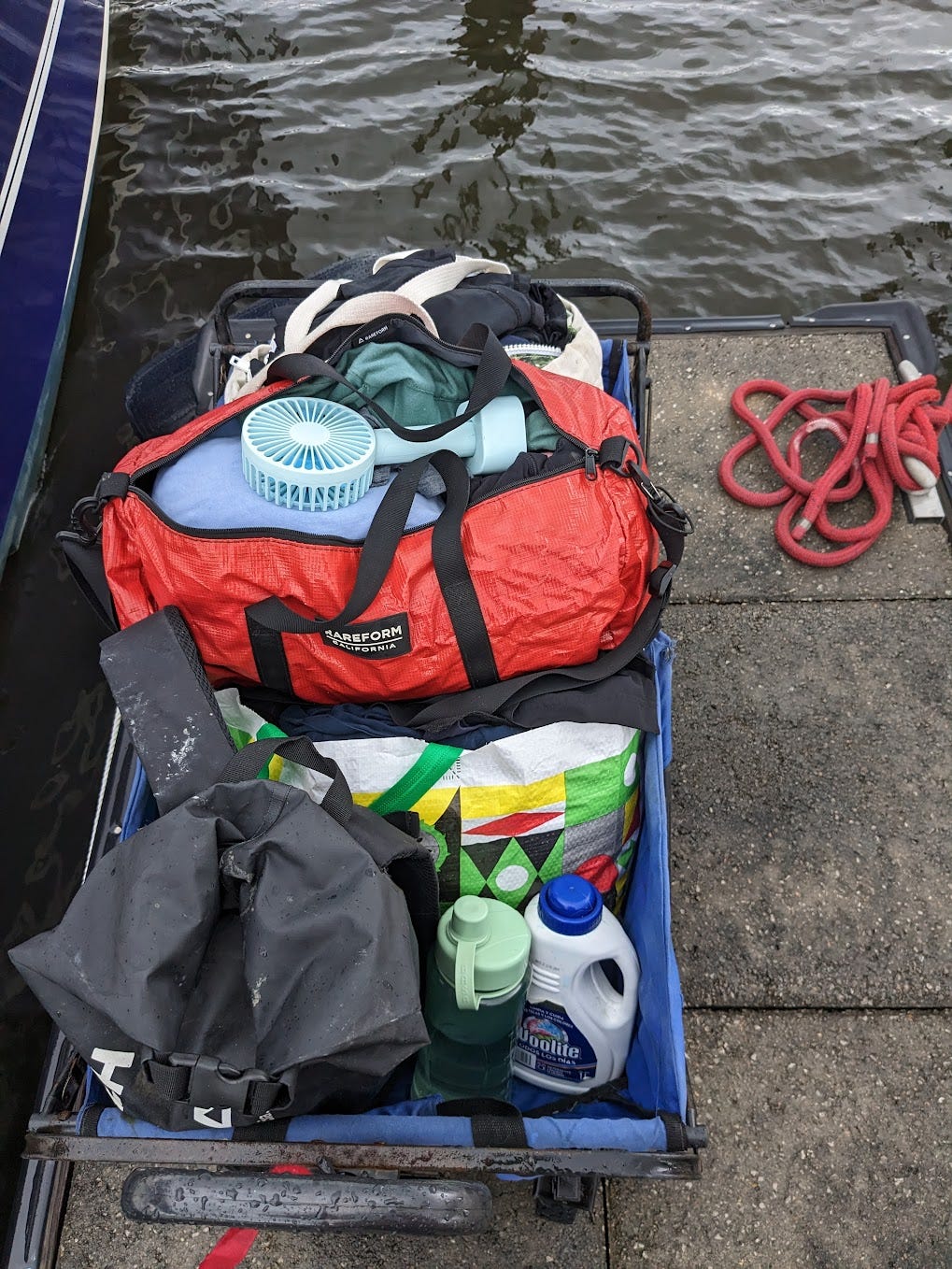Laundry in the Rain
Dressing for the task at hand
This is Clouds Form Over Land, weekly writing about life at sea and going ashore.
We are reacquainting ourselves with the US of A and its northerly cold fronts that persist into spring.
The last week of April held lots of rainy weather around the country, and some out-of-the-ordinary tornado activity in Florida. We were prepared and lucky to be in safe parts of the state at safe times. The talk on the dock was all about the unseasonable weather — arriving both ahead and behind schedule. Hurricane season is around the corner and we need to make tracks North.
Learning the many weather systems we’ve sailed through and how they interact has been a rewarding component of the voyage, and this knowledge seems to be compounding as we enter familiar latitudes. Now we can talk to friends and family up North as they experience the winds and rain that are headed for us. It’s a camaraderie created by sharing an atmosphere. I haven’t experienced it before.
This task of reading the tea leaves (weather forecasts) is also incredibly daunting. Our aim is to avoid dangerous conditions, which sometimes means leaving port when conditions are safe rather than ideal, in order to sync with seasonal cycles further down the calendar. This “where to go next” question is often of daily concern, a problem with many variables: wind speed and direction, wave height and period, amenities at the current and next stop, and readiness of the boat and crew. I am yearning to leisurely read about how temperature, air pressure, humidity, wind, and cloudiness create our weather, all from the safety of a dock.

We arrived at our last stop one day ahead of some nasty thunderstorms. Our progress North was rewarded with slightly cooler temperatures and the accompanying evening sweatshirts and quilts at bedtime. The boat is quite a cozy place to be when the wind is howling. The wind indicator read 35 knots in the slip and rainfall gave the decks a nice wash. We fell into the habit of doing errands in the rain: shopping, takeout pickup, and laundry.
For the last five seasons, we’ve been in remote parts of the tropics and often wearing a uniform of tee shirts and underwear. This slight shift in temperature and proximity to others is shuffling some new options into our wardrobe. I unearthed our “foulie jackets” - heavy-duty raincoats made with sailing offshore in mind. Mine was gifted to me for Christmas 2015 when sailing was becoming a more serious personal pastime. I found a cloth mask in one pocket. I had sewed at the beginning of the COVID-19 stay-at-home orders and had it at the ready when we were sailing down the California coast. Slipping into the jacket’s sleeves felt like suiting up for the weather and brought a sense of preparation I had forgotten. Tossing on a baseball cap added another boundary between me and the conditions.
My Midwestern upbringing formed much of my character, including a steadfast belief that there’s no bad weather, just inadequate gear. I tossed our dirty clothes in the dock cart, added a few items for the giveaway pile, and set off a half-mile to the washing machines. Rain soon started coming down sideways. My phone chirped that a tornado watch was issued and advised seeking shelter. I carried my cart over curbs and stairwells to my destination. Our household tasks are more like obstacle courses and my attire tapped my inner outdoor athlete.
It’s #MeMadeMay over on Instagram, a month-long holiday of sorts for making and styling clothes. I’ve been creating a wardrobe for almost a decade now and often find empowerment through dressing for the task at hand. I’m posting photos of the clothes that saw me through to the other coast.
Get out your spring or summer gear and plan a time to use it: gardening gloves, rain slicker, hiking boots, swim cap, river shoes, waders, bike shorts or sun hat.
Check the weather forecast and select an activity for the conditions.
Take time after an activity this week to reflect on the experience and your preparedness.
Written in the spirit of not letting what we can’t do get in the way of what we can.
Did you try any of these? I’d love to hear about it.
Clouds Form Over Land is read across 35 US states and 20 countries.
Thanks for being here! Tell a friend.



Welcome back!